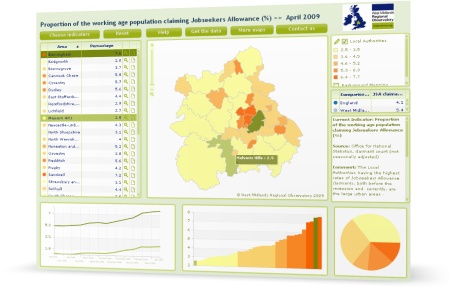In 2009/10 there were 84 inward investment successes in the West Midlands and another four knowledge-based investments. These investments created over 1,500 new jobs and safeguarded another 4,300.
Although these 88 investments represented the lowest number of jobs created or safeguarded since 1992/93, they also represented the 7th highest total number of projects since 1991.
 Inward investment is usually spread reasonably evenly between the West Midlands metropolitan areas and the shire counties. In 2009/10 the shire counties attracted the majority of inward investment projects (55%). See left.
Inward investment is usually spread reasonably evenly between the West Midlands metropolitan areas and the shire counties. In 2009/10 the shire counties attracted the majority of inward investment projects (55%). See left.
However, the metropolitan areas of Birmingham, Coventry, Solihull, Dudley, Sandwell, Walsall and Wolverhampton have attracted perhaps just over half of the projects over the years – see below. The number of jobs created and safeguarded also generally follows a similar pattern.
Filed under: Birmingham, Black Country, City Region, Coventry, Dudley, Economy & Labour Force, Enterprise, Herefordshire, Innovation, Maps, Regional Data and Intelligence Network, Research, Sandwell, Shropshire, Solihull, Staffordshire, Stoke-on-Trent, Telford & Wrekin, Walsall, Warwickshire, West Midlands, West Midlands Regional Observatory, Wolverhampton, Worcestershire | Tagged: Advantage West Midlands, economy, Innovation, inward investment, local authorities, local government, Research, West Midlands, West Midlands economy, West Midlands Regional Observatory, WMRO | 1 Comment »




 This is a guest post written by
This is a guest post written by 
 We’re featured in the first issue of the
We’re featured in the first issue of the 
 The results of the
The results of the  Two new online tools from the
Two new online tools from the  I attended a session on crowdsourcing public policy at the recent
I attended a session on crowdsourcing public policy at the recent 



